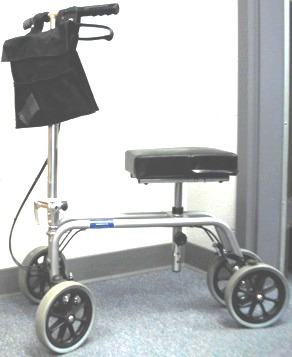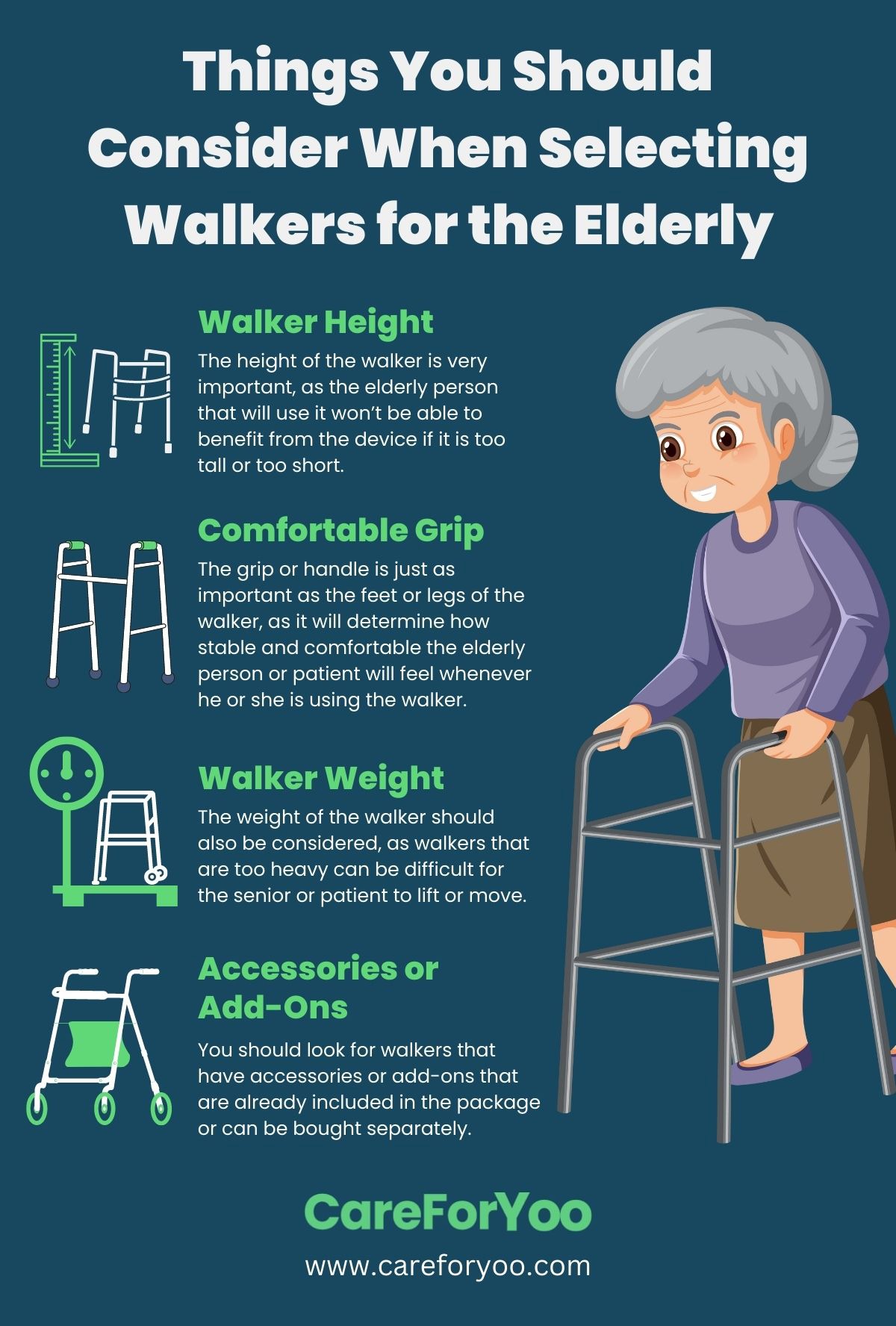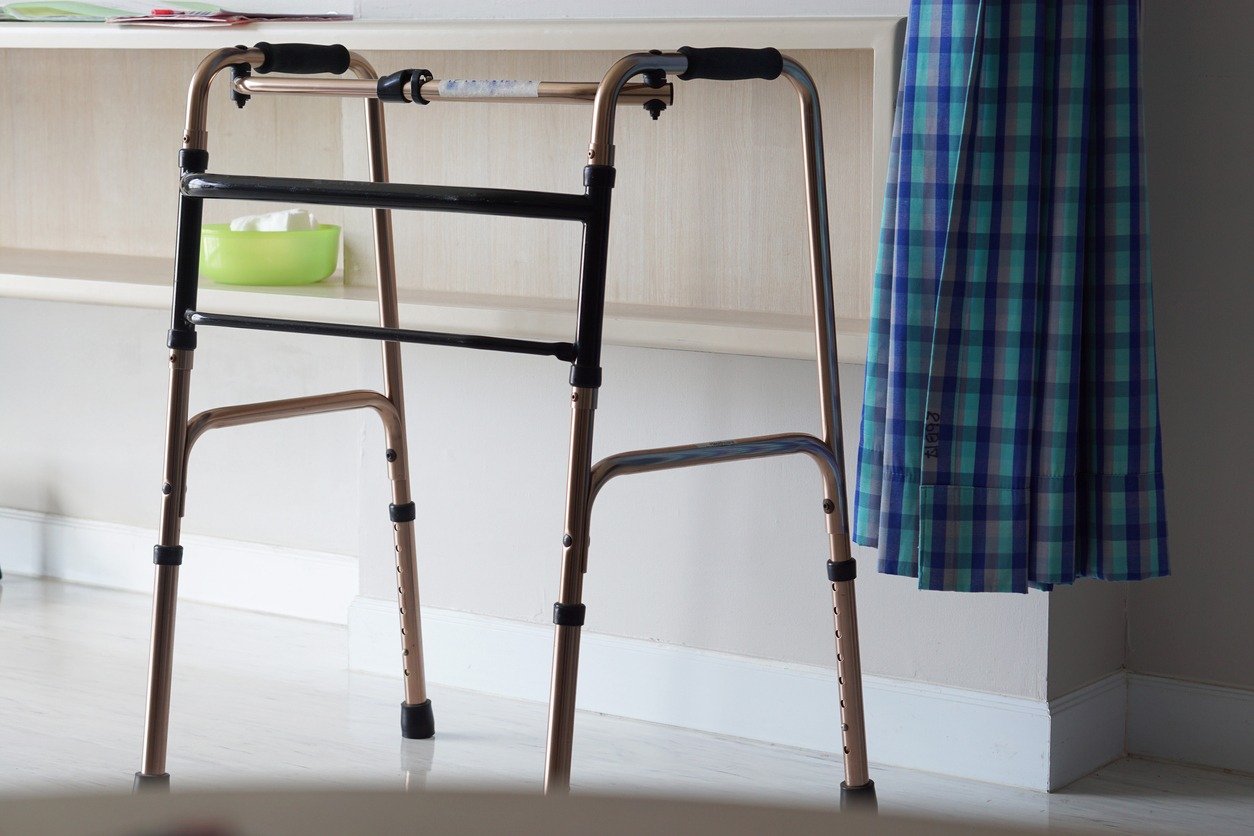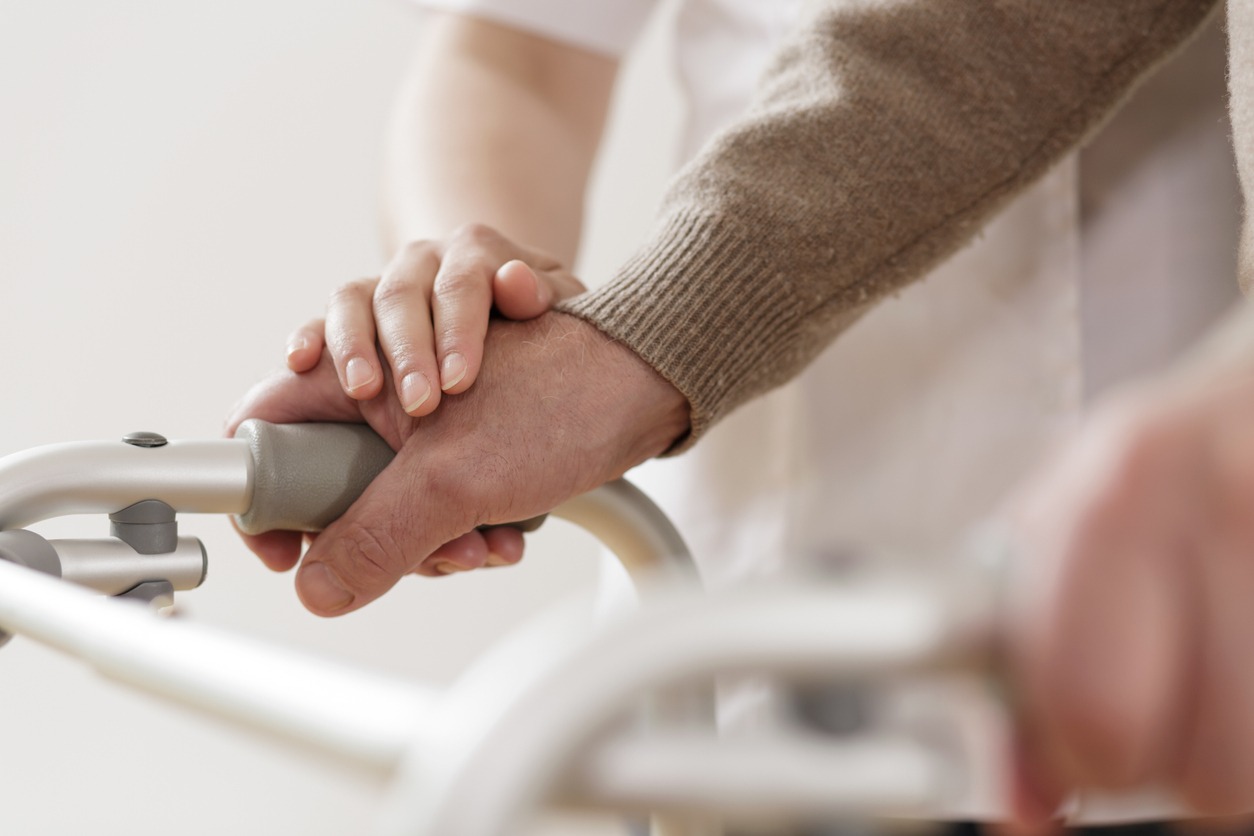Walking is a very difficult task to do for the elderly, but it is important for them to walk in order to do different activities and to have a little bit of exercise to retain the strength of their legs. For the elderly, having proper balance while walking can be challenging, so they would often need to be assisted by their loved ones or by caregivers.
Fortunately, there is an item that the elderly can use so that they will have better balance while walking without the need to be assisted by a caregiver, and this item is popularly known as the walker. What exactly is a walker? What are its benefits? And how do you buy the best walker for an elderly patient or loved one? Let us discuss the answers to these questions in this guide to selecting a walker for the elderly.
What is a Walker?
A walker is a device that can help an elderly person walk better. The walker has a frame that is set on the ground, and at the top of the frame are rubberized handles that the elderly can hold onto for safety. The frame of the walker has four feet that have rubber tips that prevent scratches on the floor or surface and provide grip and traction.
The walker for the elderly should not be confused with the walker for babies or children. The pediatric walker, which is the one used by children, is smaller in size and usually has a harness or seat with two leg holes for support. The bariatric walker for the elderly doesn’t have a harness or seat, so the handles of the walker are the only ones that can provide support for the user.
However, the bariatric walker is broader and taller in sizing, which makes it more suitable for seniors that are having difficulties walking or adults with leg-related injuries. [1] Furthermore, the lack of a harness or seat on the bariatric walker is beneficial for the elderly, as they will have an easier time letting go of the walker once they are ready to sit or lie down on a sofa or bed.
What are the Different Types of Walkers?
Different types of walkers can be bought in stores, and these types have their own sets of pros and cons. So, picking a walker to buy would depend on which specific type you think has pros that outweigh its cons. Here are the details about the different types of walkers and the features that you should know about them.
Standard Walker
The standard walker is the most common type of walker for the elderly. This type of walker has four feet that have molded rubber on their ends to offer grip or traction for the elderly person using the walker. In order to move with the walker, the elderly person would need to slightly lift the walker first using his or her hands and then move their feet slowly forward. One of the biggest advantages of the standard walker is its price, as it is more affordable compared to other types of walkers.
Unfortunately, the process of constantly lifting the walker is a disadvantage for elderly people that don’t really have enough arm strength to lift the device, even for just a few seconds. Moreover, the standard walker is completely stationary unless you lift them, so it is unlike the other types of walkers that have the means to move by simply pushing or pulling them.
Check out these two standard walkers that have good reviews online:
- Carex Folding Walker – this standard walker from Carex features a folding design so that it can easily be stored under the bed or in other narrow or hidden spaces. Besides the folding design, this standard walker only weighs 6 pounds, making it very light and easy to carry around.
- Drive Medical Deluxe 2-Button Folding Walker – another folding walker that you can fold by pressing two push buttons on the front of the frame. This folding walker also has an improved cross frame that enables the senior or patient to easily pull the walker once he or she wants to use the device.
Two-Wheel Walker
The two-wheel walker, as its name already suggests, is the type of walker for the elderly that has two wheels on its frame. The two wheels are commonly installed on the walker’s front legs, which would then allow the walker to move on the floor without the need for the elderly person to lift the handles. However, the two-wheel walker still has two rubber-tipped legs at the back that is useful for stopping the walker from moving whenever the elderly person just wants to stand for a few minutes while still holding onto the handles of the device.
The drawback to the two-wheel walker is that there is too much pressure put onto the two front wheels whenever the elderly person is moving, so the front legs may get damaged faster and easier compared to other types of walkers. Also, the two-wheel walker may not be the best walker to use on uneven surfaces, as it is better to be utilized on flat floors where the front wheels can move freely.
Here are two of the best two-wheel walkers that you can check out:
- Medline Two-Button Folding Walker with Wheels – this two-wheel walker features side cross braces that provide extra durability to the walker’s legs. Each side of this walker can fold independently for easy storage.
- Lumex ColorSelect Walker – a walker that has two large 5-inch wheels that can roll on most indoor and outdoor surfaces. This folding walker can also support up to 300 pounds of weight, so it will remain stable for most seniors or patients. The main selling point of this walker is its seven fun colors that you can choose from, which include silver, gold, plum, pink, blue, red, and black.
Three-Wheel Walker
The three-wheel walker is different from the standard walker and the two-wheel walker in terms of design and appearance. Instead of having a rectangular design, the three-wheel walker has a triangle design that allows the device to technically have three front wheels, with one wheel at the front while the other two are behind the front wheel at the sides. The handles of the three-wheel walker are in a slanted position and have brakes that can stop the movement of the two wheels at the sides of the walker.
Because the three-wheel walker is smaller than other types of walkers, it can be used in narrow spaces where other walkers won’t move freely. In addition, the front wheel of the walkers can easily be moved since it can swivel from left to right. However, this type of walker may be dangerous to use by elderly people that don’t have enough control of their arms. So, patients that have weak arms may not be able to control the front wheel and stop the side wheels using the brakes.
You can look at the details of these two three-wheel walkers for reference:
- Planetwalk Premium Three-Wheel Walker – this three-wheel walker can support up to 260 pounds of weight, although it is important to keep in mind that the walker weighs about 11 pounds, making it pretty heavy for a walker. However, the walker is still suitable for the elderly since it has great mobility because of its 360-degree front wheel swivel.
- OasisSpace Three-Wheel Walker – a three-wheel walker that is thinner than the Planetwalk walker, thus making it more suitable in narrow and crowded areas. Its thin frame is made from aluminum, which is a material that is lightweight and durable. Its 10-inch wheels are perfect for both indoor and outdoor use.
Four-Wheel Walker
The four-wheel walker looks like a standard walker, but the difference is that all of its legs have wheels on their ends. This type of walker for the elderly provides better mobility compared to the two-wheel walker and better support than the three-wheel walker. Similar to the three-wheel walker, the four-wheel walker also has brakes at the handles so that the user can stop the rear wheels from moving. There are some four-wheel walkers that have foldable frames so that they are easier to store when not in use.
However, the four-wheel walker also has the same disadvantages as the three-wheel walker, as the elderly would have a hard time using the four-wheel walker without ample arm control. Nonetheless, elderly people or patients with special needs that can still control their arms with ease and efficiency would find the four-wheel walker to be the most convenient to use out of all types of walkers for the elderly.
Below are two great four-wheel walkers that you might want to consider buying for your elderly loved ones or patients:
- OasisSpace Heavy-Duty Upright Walker – one of the best four-wheel walkers that you can get today is this heavy-duty upright walker OasisSpace. Besides having effective brakes that can stop the rear wheels, the walker also has armrests so that the senior or patient using it won’t experience arm fatigue while walking.
- RINKMO Rollator Walker – another walker for seniors that is made from durable and reliable aluminum. This walker comes with a basket at the center where seniors and their caregivers can store items like medicines, water bottles, and more.
Knee Walker
The knee walker, also known as the knee scooter, looks like a bicycle at first glance, but it is actually more of a walker than a bicycle since it doesn’t have foot pedals. The seat that you will see in the foot walkers isn’t actually a seat but a knee rest that elderly people can use to rest one of their legs while they are walking. [2] So, if one leg feels sore and painful, the person using the walker can rest that leg on the knee walker so that they won’t have to stop walking.
The knee walker has four wheels, with two at the front and two at the back. Then, the handle has brakes that can be utilized to stop the two wheels at the back of the walker. Besides the elderly, people with leg injuries can also use the knee walker so that they won’t add more damage to the injured legs whenever they want to take a walk or run errands.
The con to the knee walker is that it is longer and wider compared to other types of walkers in terms of the space they occupy on the floor. In addition, the knee walker is also much heavier, so the elderly may need assistance in lifting or moving the knee walker on surfaces where the wheels of the device would not work well.
Check out two of the best knee walkers or knee scooters below:
- ELENKER Steerable Knee Walker – a knee walker that features steerable handles and wheels so that the user will be able to move to the left or the right with ease. The 10-inch front wheel provides stability for people that have poor balance, particularly the ones that suffer from leg weakness or leg injuries.
- KneeRover Economy Knee Scooter – this knee scooter has 7.5-inch rubber wheels that are durable and slip resistant. The handlebars of this knee walker have a quick-release folding mechanism so that you can easily and safely store the walker in narrower spaces. You can also adjust the knee rest so that you can comfortably rest one of your legs on it regardless of your height.
Walker Cane
The walker cane is a hybrid device that has the best elements of a walker and a cane. When it is in its walker mode, the walker can have two rubber-tipped legs that can be placed at the front of the user for balance, while the top of the walker has rubberized handles for better grip.
The walker can be folded so that the two legs will join together to form a large-sized cane. The handle of the walker cane would remain the same in cane mode, although the legs would appear more like a wide cane or a crutch. The walker cane is arguably one of the lightest and most portable types of walkers you can get today, although it acts more like a cane than a walker since it doesn’t offer the same level of stability as the other walkers.
Things You Should Consider When Selecting Walkers for the Elderly
Due to how many types and models of walkers there are, it can be difficult for some people to choose which specific walker is the best for their patients or elderly loved ones. Luckily, there are different aspects of walkers that they can take a look at in detail so that they will know if the walkers they are considering are constructed well or are made of high-quality materials. Here are the things you should consider when selecting walkers for the elderly.
Walker Height
The height of the walker is very important, as the elderly person that will use it won’t be able to benefit from the device if it is too tall or too short. Thankfully, most walkers today have adjustable frames so that you can customize their height, although you would still need to determine the height that is the most comfortable for the elderly person or patient.
A comfortable walker should have handles that allow the elbows of the patient to bend at only 15 degrees. In addition, the handles should be at a height where the patient can stand up straight while being able to grip the handle comfortably.
Comfortable Grip
The grip or handle is just as important as the feet or legs of the walker, as it will determine how stable and comfortable the elderly person or patient will feel whenever he or she is using the walker. Most of the affordable walkers have plastic grips, which can be very slippery and don’t provide enough grip for the patient. The type of handle that offers ample grip is the rubber handle, which wraps around the top of the walker’s frame and doesn’t allow the handles of the user to slip.
Besides the material of the grip or handle, you should also consider the width of the handle, as the larger and wider grip can be beneficial for seniors or patients that want to have more areas to hold onto on the walker. By having comfortable grips or handles, the patients can use the walker conveniently without putting too much pressure on their hands, which can result in pain and soreness.
Walker Weight
The weight of the walker should also be considered, as walkers that are too heavy can be difficult for the senior or patient to lift or move. The best standard walkers are usually 5 to 6 pounds in weight, although some of the best wheeled walkers are much heavier at about 10 to 20 pounds.
It is important to note that walkers that are slightly heavier aren’t necessarily unsuitable for the elderly, especially if they have wheels that improve mobility. But, as much as possible, you should pick the lightest walker that can easily handle the weight of the patient.
Accessories or Add-Ons
You should look for walkers that have accessories or add-ons that are already included in the package or can be bought separately. Some of the accessories for walkers include baskets that can be clipped or strapped onto the walker, a tray that seniors can use to store items, a holder where seniors can place cups, mugs, bottles, or jugs filled with water, and pockets that have zippers to secure stored items. While accessories are not really important for walkers, they are useful for elderly people that want to bring different items with them during their walks or trips without the need to carry a large bag.
So, this is the simplest guide that we can provide so that you will have a much easier time selecting a walker for the elderly. Be sure to read or watch reviews online so that you will have an idea of which walkers are considered the best by previous customers and reviewers of a specific brand or model.
References
[1] Adina E. (2021, September 20). What is a Bariatric Walker? Avacare Medical. Retrieved February 15, 2023, from https://avacaremedical.com/blog/what-is-a-bariatric-walker.html
[2] Siu, E. (2020, June 19). What You Should Know Before You Get a Knee Scooter. Rent a Knee Walker. Retrieved February 15, 2023, from https://www.rentakneewalker.com/stories/what-you-should-know-before-you-get-knee-scooter













